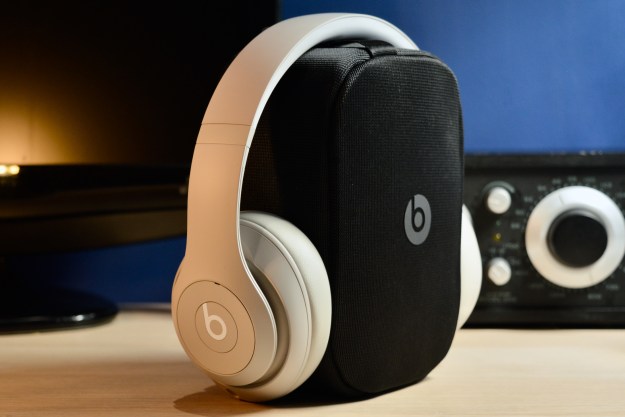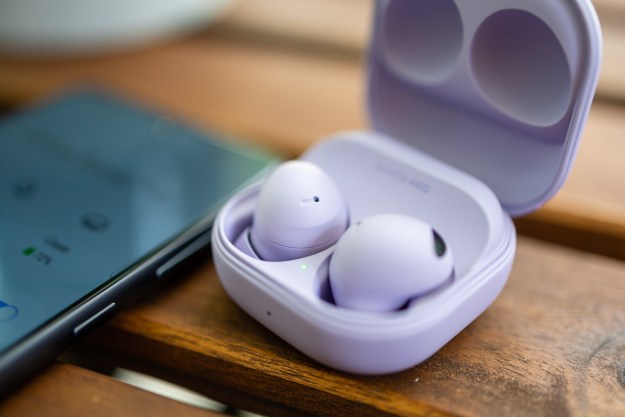This week: What is Samsung’s Intelligent mode — and should you use it? What’s the difference between Dolby Atmos FlexConnect and the Sony HT-A9? Does an auto brightness limiter affect colors, too? And, the big one: The LG G4 versus Samsung S95D — what are my predictions for this year’s Ultimate OLED Battle?
Sony surround setups

Jenkins TV writes: I have a budget of around $2,200 to splurge on an audio system, and I found two setups that can seemingly work for me since I am a ”Sonyphile” and I want a system that can seamlessly work with my recent A95L purchase. Setup A is a Sony HT A9 with a Sony SA SW5 sub 300W. Setup B includes a Sony HT A7000 soundbar with 7.1.2. Channel, Sony SA SW5 sub 300wW and Sony SA RS5 rear speakers to amp up the immersion.
My budget can comfortably accommodate both, and I know I can’t go wrong with either of these setups. But based on your professional opinion, which system can give more functionality, and which one is a better surround sound setup?
I have two answers for you. Between the two options you presented, I would personally go for the Sony HT-A9. It’s just a magically good system. The second option is no slouch, but you’ll get better immersion with the HT-A9.
The second answer is … maybe you should wait a little bit and see what kind of new products Sony has in store for this year. It might be worth waiting. I mean, you’ll still be able to get the HT-A9 if whatever Sony has that’s new doesn’t float your boat. That’s my educated gut feeling on the matter.
FlexConnect vs. Sony HT-A9

Leslie Lemmon writes: You say, “Sony has something like [the Dolby Atmos FlexConnect], but this is different.” I can’t see how the result is different from the HT-A9. Can you elaborate on that?
In my latest video about Dolby Atmos FlexConnect, I said “Sony has something like this, but it’s different.” So, let me explain. The Sony HT-A9 is a package system. You get four speakers and a little processor box that sends a wireless audio signal out to each speaker. You can also add a subwoofer to the system if you want.
By contrast, Dolby Atmos FlexConnect is a platform that doesn’t require a specific number of speakers. So you use your TV speakers and maybe one wireless speaker somewhere else. If you want to add more speakers, you can. There’s no rule on how many speakers you use. There are also no rules as to where you have to put those speakers. The idea is you place them anywhere, and
Sony is similar in that it can optimize the sound pretty well, even if the speakers aren’t in an ideal location. But there are limits. It still wants two in the front on the left and right and two toward the back on the left and right. FlexConnect doesn’t care. Put ’em anywhere, and use as many as you like. FlexConect is very flexible; the Sony HT-A9 is not as flexible. But they both use audio processing wizardry to take less-than-ideal speaker placement and make the best of it.
Auto brightness limiters

Danny75K writes: Hi! Does ABL only affect white brightness, or does it also affect colors in large areas of brightness?
ABL stands for auto brightness limiter, a function of an OLED TV that keeps it from pushing the OLED pixels too hard for too long. It’s a protection mechanism that used to be really aggressive, but now it is much less so — to the point that most folks never notice it.
The short answer is that it affects everything. In a WOLED TV, the white subpixel (that’s the W part of WOLED) supports color brightness. So if you back down the white subpixel, you back down the color brightness, too. In a QD-OLED TV, the only pixels being directly controlled are the blue OLEDs — the red and green quantum dots glow in intensity based on the intensity of the blue OLEDs, so when you dim the blue OLEDs, you dim everything.
Samsung Intelligent Mode

Parker Woolfolk wrote in to say they got a Samsung S95C OLED and a Nakamichi Dragon and have been using Samsung’s Intelligent Mode picture setting and are wondering if I think it’s good or if they’re missing something by not manually tuning the TV’s picture.
The first thing to note is that Intelligent Mode is a suite of settings for your TV that can affect both picture and sound, depending on which settings you enable. If you click on All Settings, then General and Privacy, then Intelligent Mode Settings and Intelligent Mode, you should see Adaptive Picture, Eye Comfort, Active Voice Amplifier, Adaptive Sound+, and Adaptive Volume.
Adaptive picture uses the ambient light sensor built into the TV to brighten or dim the TV based on how bright your room is. In a dark room, it will dim the picture so it isn’t uncomfortably bright. In a bright room, the picture will be brighter, so it has more pop. It may also adjust the color temperature based on the color temperature of the light in your room. It also claims to use the type of content you are viewing to make adjustments, but Samsung doesn’t disclose what the algorithm is doing. Samsung would just like you to trust that it is making decisions you will like.
Eye comfort adjusts the picture’s color temperature depending on the time of day. It knows when sunrise and sunset are, and it will reduce the blue light output, making the picture warmer so as not to mess with your circadian rhythms – it’s the same kind of feature you might find in your smartphone.

I’m not a fan of the blue-light reduction feature that is the Eye Comfort setting, so I’d turn that one off. But as for Adaptive Picture — if it’s working for you, you don’t need to feel like you are missing out on anything. Reviewers do not use it when testing TVs because we have to set a baseline for measurements, and Adaptive Picture makes the TV’s performance a moving target. We can’t have that. But to the point that maybe reviewers should talk about whether it does a good job or not, I think we definitely could. It’s just that purists don’t want to mess with anything that changes the image from what it is supposed to look like. We want reds to be the right red and blues to be the correct blue, and so forth.
Active Voice Amplifier uses a microphone to figure out what kind of noise is in the room and then optimizes the sound to project intelligible dialogue on the fly. The best demonstration I saw of this was Samsung running a vacuum cleaner while a movie played, and the feature was remarkably effective. Ideally, whether a loud faucet or dishwasher is running in the nearby kitchen, a loud fan or AC is in the room, or whatever noise there may be, this feature is supposed to make dialogue more intelligible. Try it and see if you like it.

I’m less enthused about Adaptive Sound+. It’s supposed to analyze your room and analyze the content and then provide the best sound. But my experience with these sorts of things has been really hit-or-miss — again, it’s a moving target. This is one I usually turn off. But, again, try it and see what you think.
Adaptive volume is what it sounds like. It looks at how loud or quiet you usually set your TV and tries to keep the volume in that zone all the time. The only issue with this is that it robs the sound of dynamics, which can be a big part of what makes watching a movie exciting. I’m not a fan, but it isn’t about me. It’s about you.
One thing I am not clear on is whether the TV will apply audio processing to the signal going out via your HDMI eARC connection and adjust the audio coming from your Dragon. Personally, I wouldn’t presume to tell the Dragon what to do, and I’d turn all the audio processing off; otherwise, you’re not getting what you paid for out of the Dragon.
LG G4 vs. Samsung S95D

Javi Richarte writes:
That may be the big ultra-premium TV question of the year, right? There are already a lot of great things being said about the LG G4 and the Samsung S95D OLED TVs. One is the brightest WOLED ever made, with a bunch of tweaks and improvements over last year, and the other is the brightest QD-OLED ever made with a somewhat controversial anti-glare treatment that has some folks all up in arms, although I personally think that’s unwarranted.
By now, I hope that most of you out there know me well enough to know that I’m not going to make a call before I’ve fully evaluated both TVs and published a full review on both. Hopefully, you know by now that there is no version of 2024 in which I don’t put these two side by side,and we hash out all of the differences. You may also know me well enough that I might call a definitive winner, or I might say “X” TV is best for these folks, and “Y” TV is best for these folks.
What I can tell you now is that I predict it is going to be extremely close — unless the S95D does something so egregiously wrong that it is just unforgivable, which theoretically could happen. (There were some One Connect Box issues in 2023.) But barring something like that, I predict that the S95D is going to be the best daytime, bright-room OLED TV because, on the whole, its picture quality is outstanding, and that anti-glare is so incredibly effective I wouldn’t bat an eye at the idea of putting an S95D in a room filled with glass letting sunlight pour in.

That said, from a standpoint of
I think the real differentiator between these two TVs is going to be in specific areas of picture processing. I’m talking about motion resolution, upscaling and cleanup of low-resolution, low bit rate streaming content, and SDR cable TV, as well as near-black performance. Those are the elements that I think will be scrutinized the most.
I’ll also add that I don’t think one having Dolby Vision and the other not having Dolby Vision will be a deciding factor, and I suspect I’m going to need to show you why I feel that way if that’s where I land on that.
As I said, these are just predictions, but I’m fully prepared to be wrong. I’ll be looking at these things, but I’m not going in with an attitude of seeking confirmation bias. If I’m wrong about that anti-glare, I will admit it with complete transparency. If we got fooled by an amazing demo, and the TV doesn’t perform here in the studio like it did at that demo, I’ll let you know.
In other words, you’ll just have to wait and see. And to preemptively answer your question: I don’t know when those TVs are coming in. But I do expect them very soon. They aren’t on the way yet, but I do think they’ll be here soon. And when they are here? Well, trust me, I’ll let you know the second they drop on my doorstep.
Editors' Recommendations
- Samsung S95D OLED first look: a reflection on excellence
- You Asked: Samsung QD-OLED conundrum, ATSC 3.0, and audio outputs




